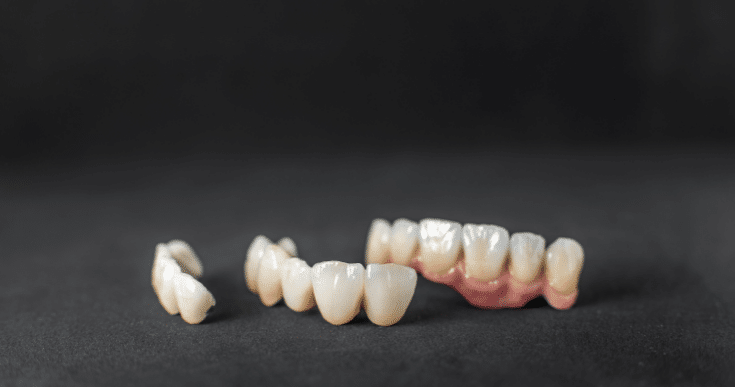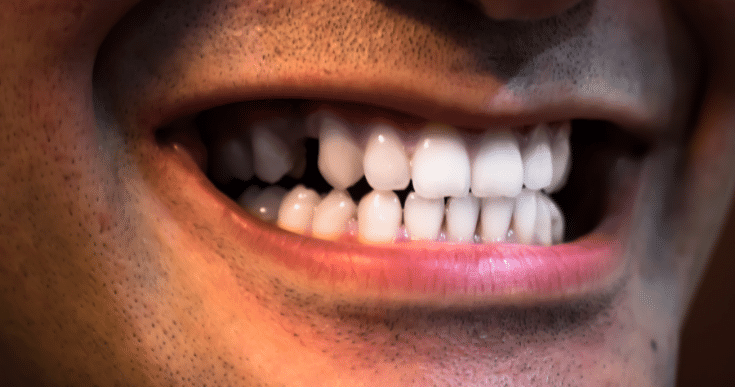
Temporary crowns protect and preserve the underlying tooth structure while waiting for a permanent crown. However, there are instances where temporary crowns may break due to various reasons. In this comprehensive guide, we will explore the signs of a broken temporary crown, immediate actions to take when faced with a broken crown, steps to contact your dentist for prompt assistance, tips for temporary crown care in the meantime, possible solutions for repairing or replacing the broken crown, and the importance of regular dental check-ups to prevent such situations from occurring in the future. By understanding what to do if your temporary crown breaks, you can ensure your dental restoration’s proper care and longevity.
Recognizing A Broken Temporary Crown:
1. Signs of a broken temporary crown may include discomfort or sensitivity in the affected tooth. You might also observe visible damage or cracks on the crown’s surface.
2. Examine the temporary crown carefully in a well-lit area, using a mirror if needed, to check for any obvious signs of breakage or displacement.
3. Look for any sharp or jagged edges on the broken crown that could cause irritation or injury to your gums or tongue.
4. If you experience sudden pain or notice any significant changes in the appearance or feel of the crown, it is crucial not to self-diagnose but to seek professional dental advice instead.
5. Avoid attempting to fix the broken crown yourself, as improper handling or incorrect placement may lead to further damage or complications.
6. It’s essential to contact your dentist as soon as possible to schedule an appointment and address the broken temporary crown promptly. They will be able to assess the extent of the damage and determine the appropriate course of action to prevent further harm to the tooth and surrounding structures.
Immediate Actions To Take:
- Don’t panic: It is understandable to feel concerned or worried when your temporary crown breaks, but staying calm and composed is important.
- Avoid touching or removing the crown: Refrain from touching or attempting to remove the broken crown. Handling it incorrectly could cause more damage or dislodgement.
- Rinse your mouth with warm saltwater: To prevent infection, gently rinse your mouth with warm saltwater, mixing half a teaspoon in eight ounces of water, swishing for 30 seconds, and spit out.
- Take note of any discomfort or sensitivity: Observe any pain, discomfort, or increased sensitivity around the broken temporary crown area to inform your dentist about the situation.
- Contact your dentist promptly: If you notice a broken temporary crown, contact your dentist immediately for a clear explanation, symptoms, and guidance on the next steps, and potentially schedule an emergency appointment.
- Follow any instructions given by the dentist: Your dentist may give you specific instructions based on the severity of the break and your situation.
Following their advice regarding diet restrictions, oral hygiene practices, and any temporary measures they suggest until your dental appointment is crucial.
Contacting Your Dentist:
- Explain the situation: When contacting your dentist, clearly state that your temporary crown has broken, including the date and any potential discomfort or sensitivity symptoms.
- Communicate urgency: Emphasize the need for prompt attention due to the broken temporary crown. Mention if you are experiencing significant pain or if there is visible damage.
- Inquire about emergency appointments: Request emergency appointments from your dentist for broken temporary crowns, ensuring proper protection for your underlying tooth.
- Follow their advice: Your dentist may guide you in managing a broken crown, including avoiding certain foods or behaviors that could worsen the situation until your appointment.
- Provide updated contact information: Keep your dentist updated on your appointment updates and changes by providing them with your current contact information, including phone number and email.
- Keep a record of the conversation: Record the date, time, and key points discussed during your conversation with the dentist’s office for future reference and to avoid misunderstandings or discrepancies.
- Be prepared for potential rescheduling: Unforeseen circumstances may necessitate a rescheduled appointment. Be flexible and work with your dentist to find a suitable alternative date and time.
Temporary Crown Care In The Meantime:
- Avoid eating sticky or hard foods: To prevent damage to your temporary crown, avoid sticky or hard foods until you see a dentist and opt for softer, chewable foods.
- Good oral hygiene: Maintain good oral hygiene by gently brushing your teeth twice daily, avoiding excessive force around the broken crown area, and flossing carefully to remove food particles.
- Use temporary dental cement (if provided by the dentist): Follow your dentist’s instructions on temporary dental cement to secure a broken crown temporarily, preventing further damage until professional dental care is sought.
- Minimize chewing on the affected side: Chew on the opposite side of your mouth to reduce pressure on the broken temporary crown, protect it, and prevent further complications.
- Avoid touching or playing with the broken crown: Avoid touching or playing with the broken temporary crown while waiting for your dental appointment to prevent unnecessary manipulation or further crown damage.
These instructions may be tailored to your situation and can help promote the best outcome for your broken temporary crown.
Possible Solutions And Next Steps:
- Repairing the broken temporary crown: Your dentist can repair a temporary crown if the damage is minimal, using dental materials to restore its integrity, especially when the underlying tooth is in good condition.
- Placement of a new temporary crown: If a temporary crown is damaged or unrepairable, a new one may match the natural tooth’s shape, size, and color, protecting it until a permanent crown is installed.
- Precautions to prevent future crown breakage: Following a broken temporary crown, your dentist may suggest preventive measures like avoiding hard chewing, maintaining good oral hygiene, and scheduling regular dental check-ups to ensure restoration longevity.
- Follow-up appointments: Your dentist may schedule follow-up appointments to monitor the restoration of your broken temporary crown, ensuring proper healing and prompt resolution of potential issues.
- Long-term dental restoration: Temporary crowns are temporary, not permanent. Dentists replace temporary ones with permanent ones made from durable materials, providing long-term protection and functionality.
- Open communication with your dentist: Maintaining open communication with your dentist is crucial for addressing a broken temporary crown, sharing concerns, and following their guidance to achieve the best dental restoration outcome.
Addressing a broken temporary crown is crucial for maintaining oral health and preventing complications. Recognize signs, avoid touching or removing the crown, and rinse your mouth with warm saltwater. Consult your dentist for advice and make an emergency consultation. Care for the temporary crown by avoiding sticky foods, practicing good oral hygiene, and using temporary dental cement. Regular dental check-ups ensure restoration longevity.



